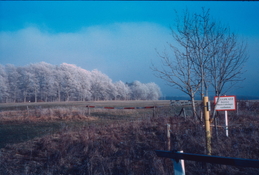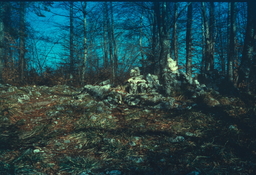- Home
- Forums
- Analog Workflow Forums (100% Analog/Traditional)
- Darkroom
- Color: Film, Paper, and Chemistry
You are using an out of date browser. It may not display this or other websites correctly.
You should upgrade or use an alternative browser.
You should upgrade or use an alternative browser.
C41 Color Film - Reversal Process
-
A
- Thread starter arturo_rs
- Start date
Recent Classifieds
-
For Sale Darkroom supplies, accessories. Local (Tacoma, WA) pickup only
- Started by binglebugbob
-
Want to Buy Looking for a Wollensak 6" (159mm) f12.5 Extreme W.A.
- Started by lecarp
-
For Sale Nikon 200-400mm f/4 AF-S Nikkor ED Lens
- Started by Barlow
-
For Sale Manfrotto 438 Leveling Base
- Started by djdister
Forum statistics

Reversal RA-4 experiment thread.
Reversal RA-4 processing is discussed a little in many threads, but there's quite little definite experimental information available. I've done my own little research for two years, every now and then when I have something else to do and want to escape from it ;). I've spent a few nights...

Some RA-4 Reversal success today...
This is Provia 100F, 35mm, wet printed in the darkroom using the RA-4 reversal process. It's been a few years since I experimented with this process. I remember having issues with whites that stopped at gray. This print has a full range of tones, and I don't know what I did differently...
The best result I've seen was some guy in I think the US a couple of years ago who printed his Ektachrome slides onto Kodak Endura. The caveat is that only a few landscape images were shown, and they mostly had fairly low dynamic range. IDK how well his process would have gone with more contrasty slides and things involving more critical stuff like skin tones. To be honest, I'm skeptical. The process is inherently difficult to control.
A compounding problem is that the bleach you'd have to use would almost certainly destroy the antioxidants embedded in the emulsion. Those are there to protect the dyes against the influence of stuff like ozone, so reversal processing will generally result reduced archival stability. For most home printers I guess that won't make all that much of a difference, but for anyone embarking upon this with an eye on using this for serious art that will become part of collections, it's a problem.
I got as far as this:
That's pretty good; I've not seen all that much better to be honest.
That's a scanned reversal RA4 print from a slide?
Yes.
It's very high in contrast and there is a prominent cross. I didn't think it would be good enough for prints from my slides so I didn't pursue the matter further. And I lack chemistry knowledge to tweak the first developer which I'm pretty sure is needed to get better prints. I might try some other BW film developers, but that would be just going in blind and hope for a lucky break (which usually don't happen for me)...
Yes.
It's very high in contrast and there is a prominent cross. I didn't think it would be good enough for prints from my slides so I didn't pursue the matter further. And I lack chemistry knowledge to tweak the first developer which I'm pretty sure is needed to get better prints. I might try some other BW film developers, but that would be just going in blind and hope for a lucky break (which usually don't happen for me)...
The crossover could potentially be fixed (at least to an extent) by preflashing the paper. If you have cyan highlights, for instance, you could give a preflash with less red (more cyan, less magenta + yellow) to selectively shift the highlights in the desired direction. So you color balance the print for the midtones or shadows, and then flash the highlights into the desired direction. You may want to set up a second enlarger (or some other controllable light source) to do this; it gets pretty confusing and tedious to have to do it on a single enlarger.
The advantage is that you don't have to break the developer to get this to work, it's pretty effectively controllable, and it actually works (as opposed to trying to modify the developer, which won't be very effective anyway).
I've had very limited success with preflashig in straight RA-4 (didn't try it with reversal RA-4).
If done "right" (preflash only as much so that you still can't (or barely) notice it in whites) its effect is so limited that it's not worth the bother. Preflash more and you lose pure whites. Now, this might work on some negatives I guess, but again...
If done "right" (preflash only as much so that you still can't (or barely) notice it in whites) its effect is so limited that it's not worth the bother. Preflash more and you lose pure whites. Now, this might work on some negatives I guess, but again...
Donald Qualls
Subscriber
the bleach you'd have to use would almost certainly destroy the antioxidants embedded in the emulsion.
What I've seen of RA-4 reversal used regular RA-4 blix. Expose, first dev, stop/wash, then room light on, color dev and blix to remove the developed silver from both first and color developer.
With that, there shouldn't be any damage to the print; it's the same process as usual except for the first developer.
You're right @Donald Qualls I keep forgetting that. Over and over again!
Meinrad
Member
Hi, i didn´t completely follow your Ra-4 reversal posts, that would be a new construction site...
Now i scanned my results and i am very happy because i see i am on the right track now:
-2 stops

Now i scanned my results and i am very happy because i see i am on the right track now:
-2 stops
Meinrad
Member
- 3 stops

Meinrad
Member
i think i have to fine tune the first developer, but over all i am very happy with the result. Scans are neutral without any correction
Meinrad
Member
| Photrio.com contains affiliate links to products. We may receive a commission for purchases made through these links. To read our full affiliate disclosure statement please click Here. |
PHOTRIO PARTNERS EQUALLY FUNDING OUR COMMUNITY:  |












